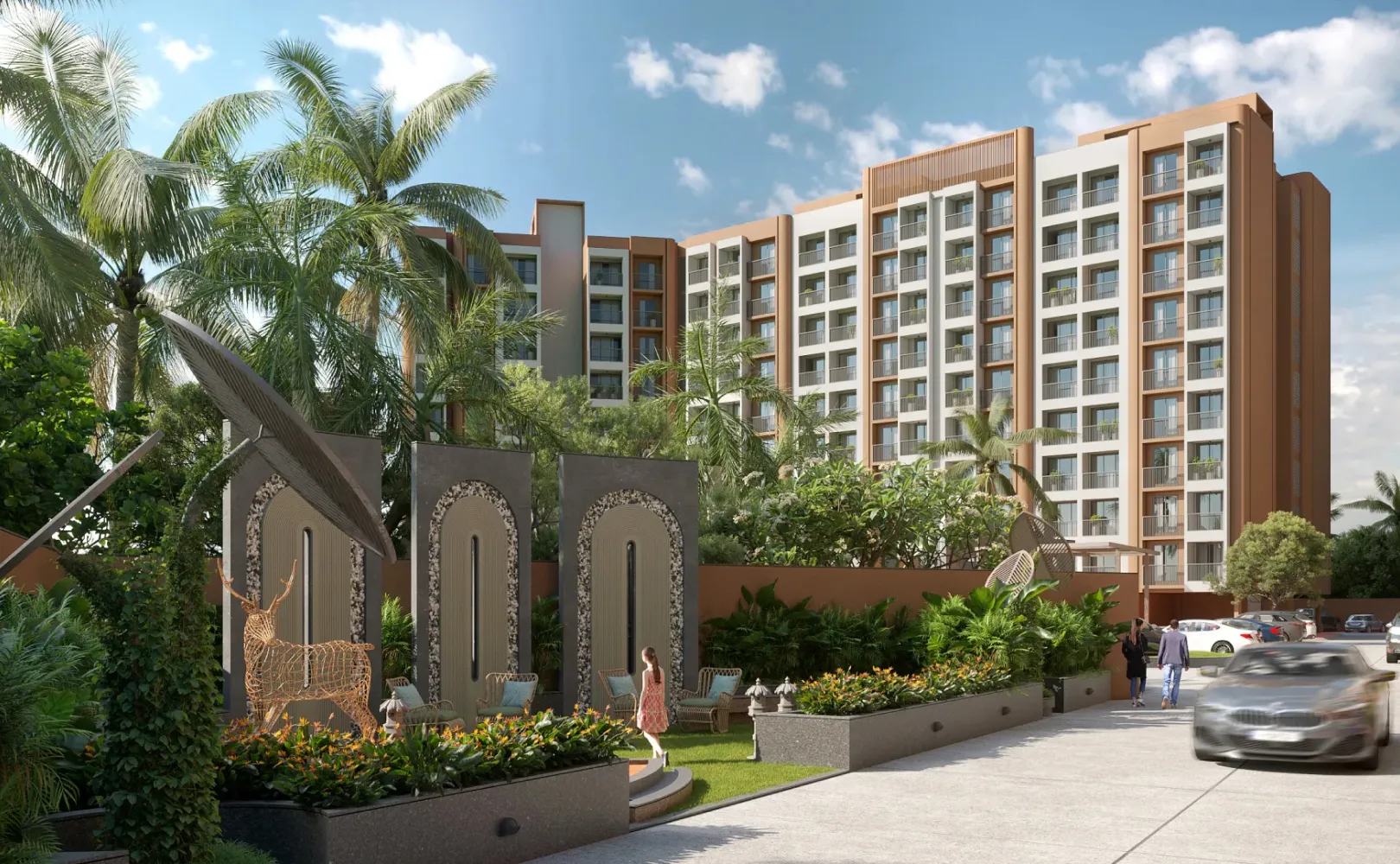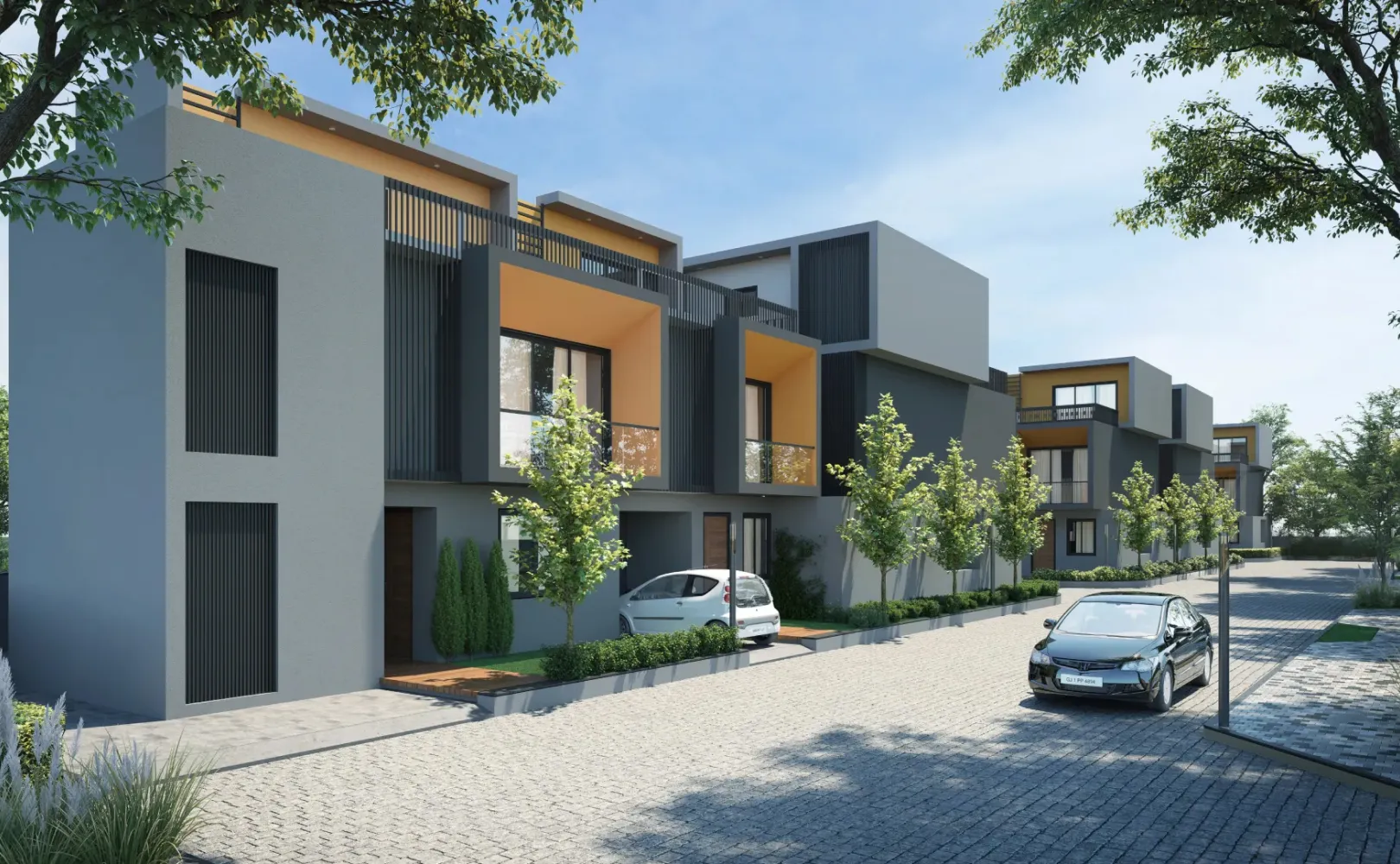Definition Of Home / House
At its core, a home or house is more than just a physical structure; it is a sanctuary, a space where life unfolds, memories are made, and a sense of belonging is nurtured. Broadly defined, a home or house is a dwelling place that provides shelter, comfort, and security. However, the concept extends far beyond mere bricks and mortar, encompassing diverse architectural styles, layouts, and purposes.
Significance of Understanding Different Types of Houses
Delving into the myriad types of houses holds profound importance in our quest to comprehend the rich tapestry of human habitation. Each type of dwelling reflects not only architectural nuances but also cultural, economic, and lifestyle choices. Understanding these variations offers insights into societal preferences, urban development, and individual preferences. Whether one is embarking on homeownership or simply intrigued by the ways people create their living spaces, exploring the diverse world of houses opens a window into the essence of human life and culture. Through this exploration, we can appreciate the significance of homes as more than just structures—they are the very foundations of our daily lives and societal structures.
1. Apartments: Vertical Living
What is Apartment?
Apartment, synonymous with vertical living, showcase distinctive features that set them apart in the realm of housing. Typically situated in multi-story buildings, apartments are characterized by their shared walls, compact layouts, and a vertical arrangement of living spaces. Common elements include communal areas, such as lobbies and elevators, fostering a sense of community within the vertical landscape.
Advantages Of Apartments
While renovation brings forth numerous benefits, it is not without its set of challenges. Understanding these potential obstacles is crucial for homeowners considering the renovation route.
I. Space Efficiency
Apartments often maximize space utilization, making them ideal for urban living.
II. Amenities
Many apartments offer shared amenities like gyms, pools, and communal spaces, enhancing residents' quality of life.
III. Security
Secured entrances and often concierge services contribute to a heightened sense of security.
Disadvantages Of Apartments
I. Limited Privacy
Proximity to neighbors may result in reduced privacy compared to standalone dwellings.
II. Noise
Shared walls can lead to increased noise levels, impacting the tranquility of the living space.
III. Restricted Customization
Limited scope for personalization and structural changes.
2. House/Villa: The Epitome of Luxury
What Is House/Villa?
Houses and villas, often synonymous with opulence, boast distinctive features that elevate them to the epitome of luxury living.
Key characteristics Of House/Villa
I. Spacious Layouts
Generously sized rooms and expansive living spaces create a sense of grandeur.
II. Private Outdoor Areas
Gardens, courtyards, and sometimes pools contribute to a luxurious lifestyle.
III. Architectural Elegance
Ornate designs, high-quality materials, and attention to detail characterize upscale houses and villas.
Pros of House/Villa
I. Privacy
Houses and villas often offer more seclusion compared to denser living arrangements.
II. Customization
Homeowners have the freedom to personalize and modify their spaces according to their preferences.
III. Outdoor Amenities
Private gardens and outdoor spaces provide a serene retreat.
Cons Of House/Villa
I. Maintenance
Larger spaces can require more upkeep, both in terms of time and expenses.
II. Isolation
While private, houses/villas may be situated farther from urban centers, leading to a sense of isolation.
III. Cost
The initial cost and ongoing expenses of owning and maintaining a house/villa can be substantial.
3. Studio Apartments: Compact Living, Maximum Style
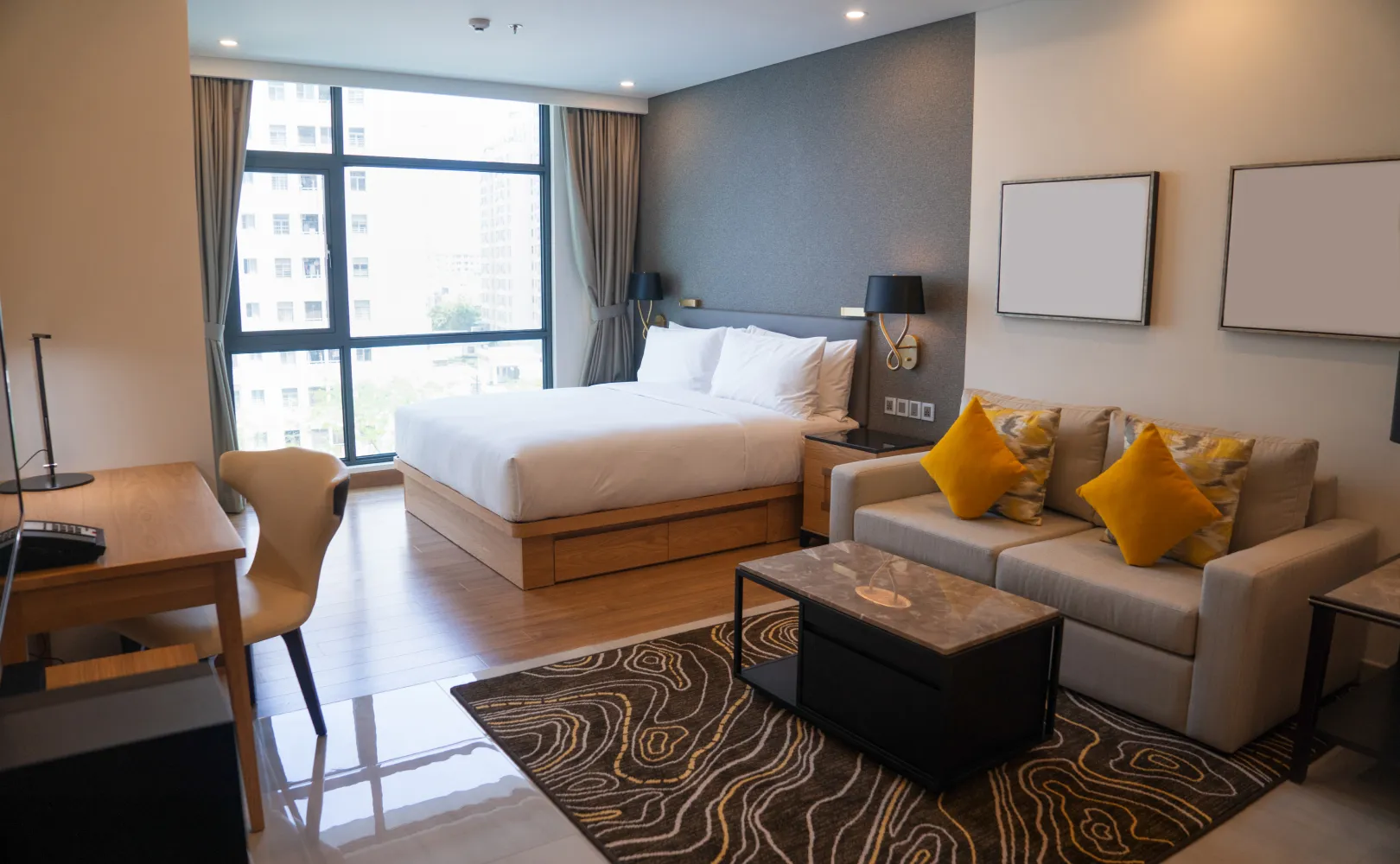
What is a Studio Apartment?
A studio apartment, also known as a studio flat or efficiency apartment, is a self-contained living space that typically consists of a single open room serving multiple purposes.
What Sets Studio Apartments Apart?
Studio apartments stand out as a unique housing option characterized by their efficient use of space and all-in-one living areas. What distinguishes them includes:
I. Single Open Space
A studio apartment typically integrates living, sleeping, and kitchen areas within a single, open floor plan.
II. Limited Walls
Minimal partitioning allows for a sense of openness, albeit within a compact space.
III. Versatility
Studios cater to a variety of living styles, making them popular among singles, students, and urban professionals.
Advantages of Studio Apartments
I. Cost-Effective
Studio apartments generally have lower rent and utility costs compared to larger living spaces, making them more affordable for individuals on a budget.
II. Efficient Cleaning and Maintenance
With a smaller footprint, cleaning and maintaining a studio apartment is quicker and requires less effort than managing a larger space.
III. Centralized Living
Everything is within easy reach in a studio apartment, promoting a sense of efficiency and convenience. The kitchen, bedroom, and living area are all in close proximity.
IV. Minimalist Lifestyle
Studio living encourages a minimalist lifestyle, as residents often need to prioritize essential belongings and avoid unnecessary clutter.
V. Ideal for Singles and Couples
Studio apartments are well-suited for individuals living alone or couples who prefer a more intimate living arrangement.
VI. Urban Convenience
Their compact size often means studio apartments are located in central urban areas, providing residents with easy access to amenities, public transportation, and cultural offerings.
Disadvantages of Studio Apartments
I. Limited Space
The most apparent drawback is the limited space available, which can be challenging for individuals with a lot of belongings or those who value ample living space.
II. Privacy Concerns
The open layout may compromise privacy, especially when it comes to hosting guests or when multiple activities are taking place simultaneously.
III. Storage Challenges
Storage space can be limited, requiring creative solutions to keep belongings organized and accessible without cluttering the living area.
IV. Noise Levels
Shared walls and close proximity to neighbors can lead to increased noise levels, impacting the overall tranquility of the living space.
V. Lack of Formal Dining Area
Studio apartments often lack a designated dining space, requiring residents to eat in the kitchen or living area, or even use multipurpose furniture for dining.
VI. Limited Hosting Capacity
Hosting guests in a studio apartment can be challenging due to the limited space, making it less suitable for those who enjoy entertaining on a regular basis.
4. Serviced Apartments : The Fusion Of Home And Hotel
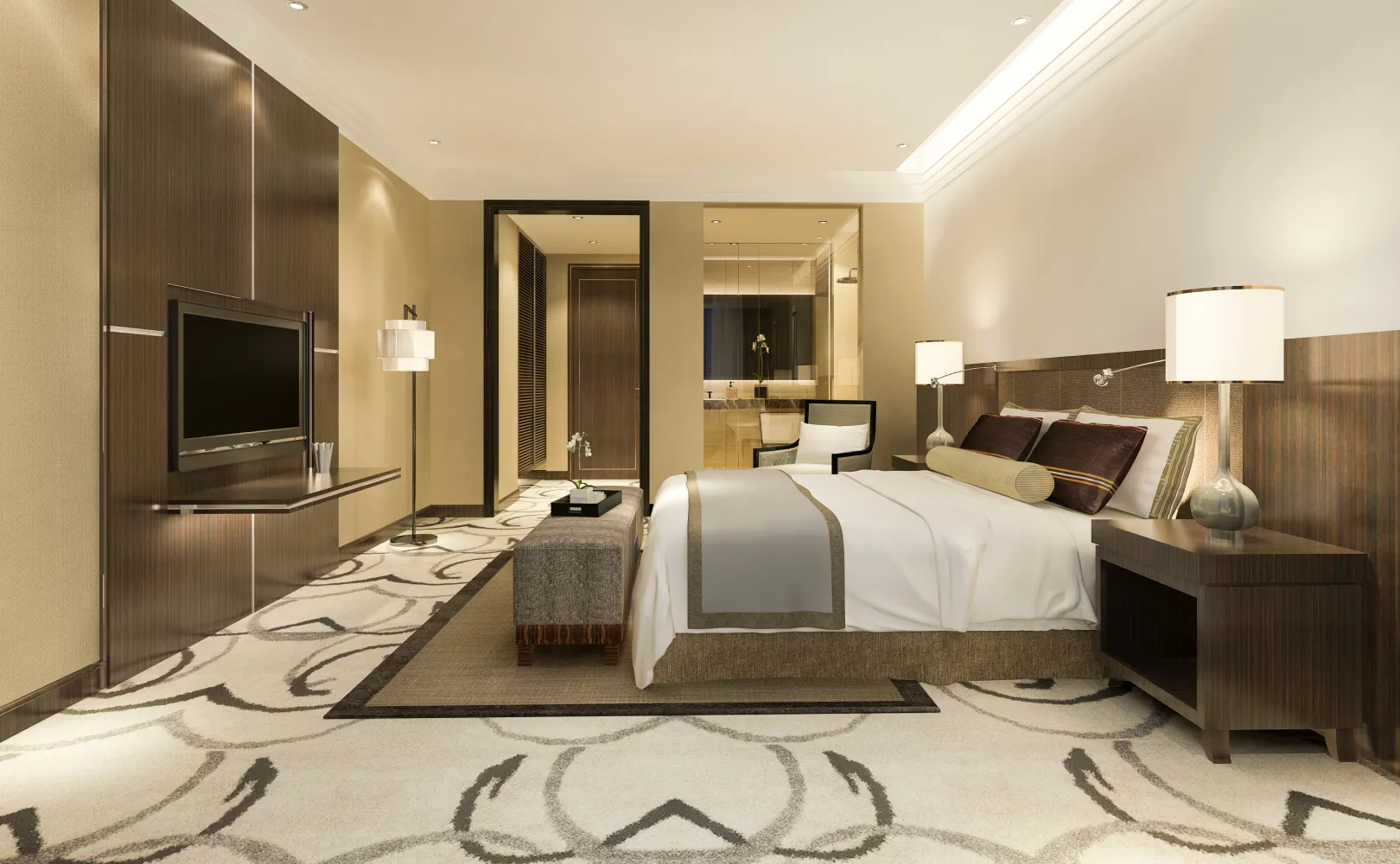
What is a Serviced Apartment?
A serviced apartment is a fully furnished and equipped accommodation unit that offers a blend of home-like comforts and hotel-like amenities. These apartments are designed to cater to the needs of both short-term and long-term stays, providing a flexible and convenient living solution for various types of travelers.
Advantages of Serviced Apartments
I. Fully Furnished
Serviced apartments come equipped with furniture, appliances, and amenities, allowing residents to move in with minimal hassle. Common features include a bedroom, living area, kitchen, and bathroom.
II. Hotel-Like Services
One of the distinguishing factors of serviced apartments is the provision of services typically associated with hotels. This may include housekeeping, concierge services, security, and sometimes even room service.
III. Flexibility in Lease Terms
Unlike traditional apartment rentals, serviced apartments often offer flexible lease terms, accommodating both short-term stays, such as a few days or weeks, and long-term stays, extending to several months or even years.
IV. Cost-Effective for Extended Stays
Serviced apartments can be a cost-effective option for extended stays, as they provide a home-like atmosphere with the ability to cook and do laundry, potentially reducing the reliance on outside services.
V. Ideal for Business Travelers and Expatriates
Serviced apartments are particularly popular among business travelers, expatriates, and individuals in need of temporary housing. The convenience of a fully equipped living space, coupled with hotel services, makes them suitable for those on the move.
VI. Global Presence
Serviced apartments are found in major cities around the world, catering to the needs of travelers seeking a comfortable and convenient alternative to hotels or traditional rentals.
Disadvantages of Serviced Apartments
I. Potentially Higher Cost for Short Stays
For very short stays, serviced apartments might be more expensive compared to budget hotels, as some of the included amenities may not be fully utilized.
II. Limited Hotel-Like Atmosphere
While serviced apartments offer certain hotel-like services, they may lack the ambiance and social aspects that traditional hotels provide.
III. Varied Quality Standards
The quality of serviced apartments can vary, and not all may meet the same standards. This inconsistency can lead to different experiences for residents.
IV. Less Personalized Service
Compared to upscale hotels, serviced apartments may offer fewer personalized services, as the emphasis is often on self-sufficiency.
V. Smaller Social Spaces
Unlike hotels with expansive lobbies and communal areas, serviced apartments may have limited social spaces, potentially reducing opportunities for social interaction.
5. Vacation Homes: Retreats Beyond Borders
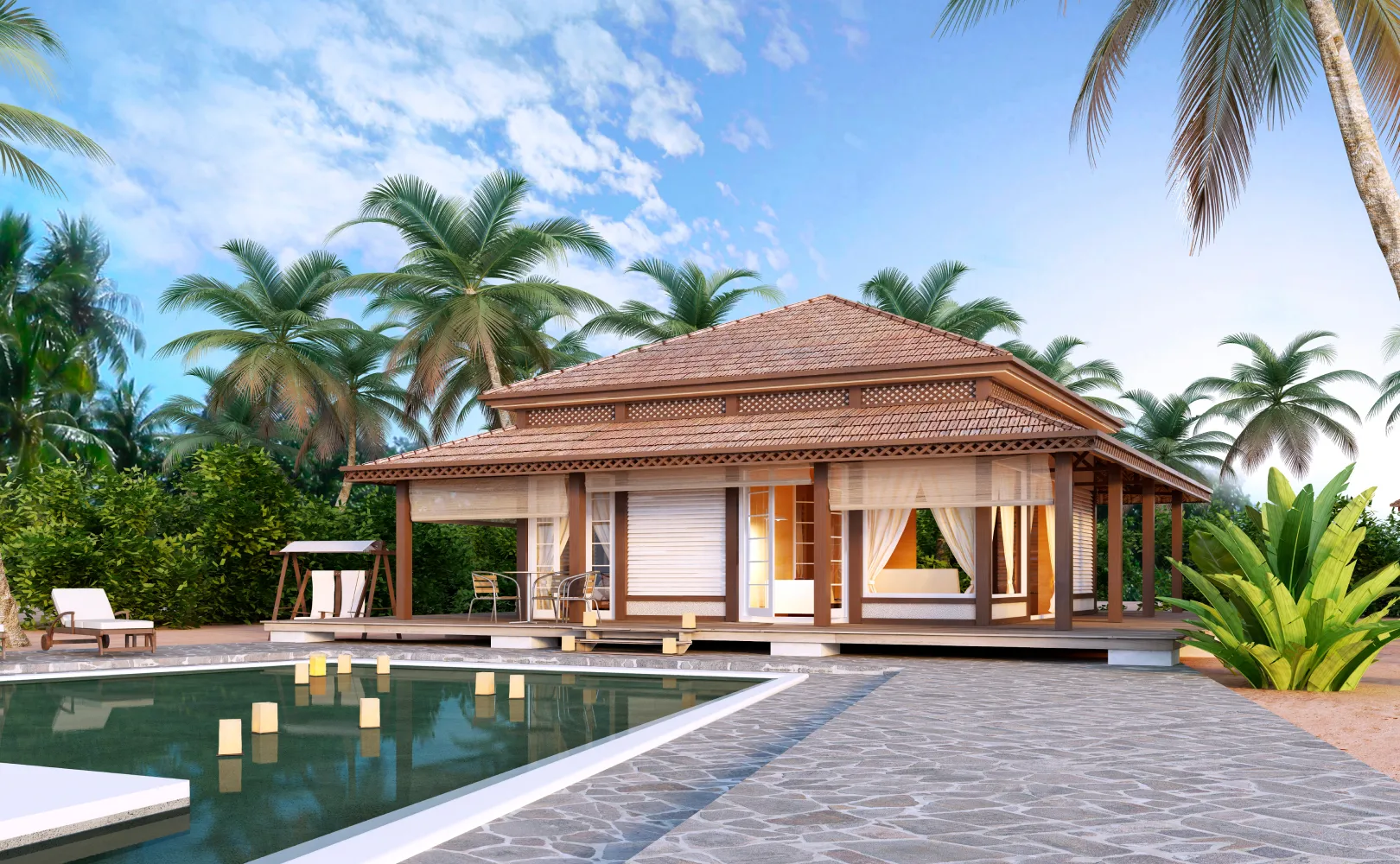
What is a Vacation Homes?
Vacation homes, also known as holiday homes or second homes, are residential properties specifically acquired for recreational purposes rather than primary residency. These homes serve as retreats, providing individuals and families with a getaway destination away from their usual living environment. Vacation homes can vary widely in terms of size, location, and amenities, offering a diverse range of options for those seeking temporary escapes.
Pros and Cons of Owning or Renting a Vacation Home
I. Pros of Owning Vacation Home
Personal Retreat
Unlike hotels with expansive lobbies and communal areas, serviced apartments may have limited social spaces, potentially reducing opportunities for social interaction.
Potential Investment
Vacation homes can serve as an investment, appreciating in value over time or generating rental income when not in use.
II. Cons of Owning Vacation Homes
Financial Commitment
Owning a vacation home entails significant upfront and ongoing costs, including maintenance, property taxes, and insurance.
Limited Utilization
Owners may find it challenging to utilize the property fully, especially if it is in a distant location.
III. Pros of Renting Vacation Homes
Variety and Flexibility
Renting allows individuals to experience different vacation destinations without the long-term commitment of ownership.
Cost Savings
Renting can be more cost-effective for those who prefer occasional getaways without the financial responsibility of ownership.
IV. Cons of Renting Vacation Homes
Lack of Personalization
Vacation rentals may lack the personal touch and familiarity of a owned property.
Availability Challenges
Depending on the destination and time of year, finding suitable vacation rentals may be challenging.
Conclusion
We've explored a range of dwellings, from apartments to vacation homes. Each type caters to unique lifestyles, offering a diverse spectrum of living experiences. The choice depends on individual preferences—apartments for urban living, houses for luxury, studios for minimalism, and vacation homes for personalized retreats. Anticipate future housing trends embracing sustainability, technology integration, flexible designs, and a balance between urbanization and nature. The evolving landscape promises innovative and adaptable living spaces.
